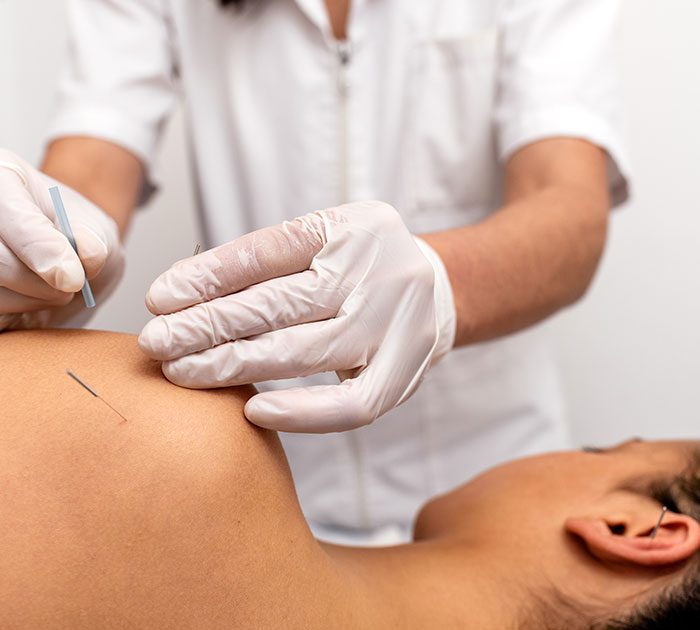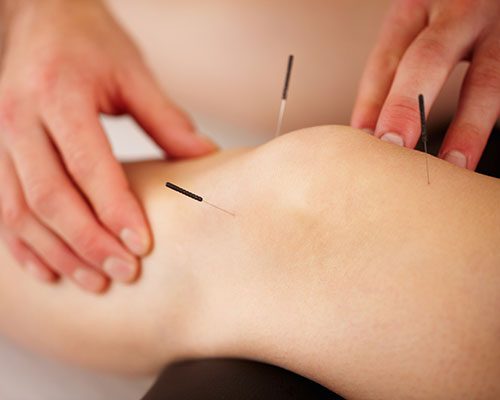Dry Needling
WHAT IS DRY NEEDLING?
Dry Needling (DN) utilises a fine needle or acupuncture needle inserted into the skin, muscle and other soft tissue of the body.
DN can be aimed at myofascial trigger points (hyperirritable spots located in the taut band of the skeletal muscle and can be palpable as a nodule) or a more generalised approach to the muscle or injured area.
Needles can be inserted to varying depths. Your trained practitioner will have appropriate anatomy knowledge to ensure placement of the needles will give the desired benefits with minimal risk.
BENEFITS
- Increase pressure pain threshold and range of motion
- Decrease muscle tone
- Decrease pain

MECHANISMS OF ACTION
- ‘Local twitch response’ which is an involuntary spinal reflex resulting in a localized contraction of the affected muscles that are being dry-needled. Local twitch response can lead to alteration in the length and tension of muscle fibres and stimulate mechanoreceptors.
- Increase blood flow to muscles improving oxygenation.
- Local and central nervous responses to restore haemostasis at the site of the trigger point which results in a reduction in both central and peripheral sensitisation to pain.
CONTRAINDICATIONS
Dry needling (DN) therapy should be avoided:
- In a patient with needle phobia.
- Patient unwilling - fear, patient belief.
- Unable to give consent - communication, cognitive, age-related factors.
- Medical emergency or acute medical condition.
- Over an area or limb with lymphedema as this may increase the risk of infection/cellulitis and the difficulty of fighting the infection if one should occur.
OTHER CONSIDERATIONS FOR CAUTION
- Abnormal bleeding tendency
- Compromised immune system
- Vascular disease
- Diabetes
- Pregnancy
- Frail patients
- Epilepsy
- Psychological status
- Patient allergies
- Patient medication
- Unsuitable patient for any reason
EVIDENCE
The effectiveness of this treatment depends greatly on the skill of the therapist to accurately palpate myofascial trigger points as well as kinaesthetic awareness of the anatomical structures.
According to a systematic review study of 16 studies, 7 of which were RCTs, the use of DN alone or with other interventions generally resulted in improvement in spasticity level, pain intensity, and ROM in stroke survivors.
It has been found that when manual therapy and exercise programmes are combined with dry needling, the improvement in pain, function and disability in patients with knee OA, TMJ dysfunction and plantar fasciitis.
Talk to your therapist and GP now to see if you are suitable for Dry Needling.

